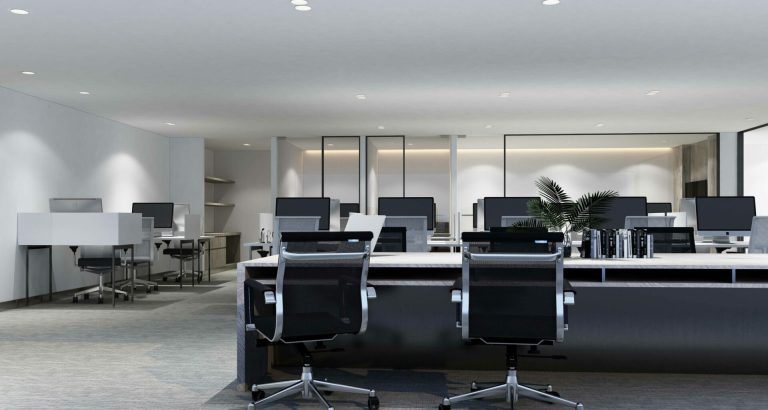Choosing the right size of office space for your business is a crucial decision that can greatly impact your company’s productivity, employee satisfaction, and overall success. Whether you’re just starting out or looking to expand, it’s important to carefully consider your needs and make an informed choice. In this article, we will explore the key factors to consider when determining the right size of office space, and provide practical tips to help you make the best decision for your business.
1. Assess your current and future needs
Before you start looking for office space, it’s essential to assess your current and future needs. Begin by evaluating your current office layout and considering any changes that may be required. Are you currently cramped for space? Do you anticipate hiring more employees in the near future? Will you need additional meeting rooms or storage areas?
These are all important questions to ask yourself before searching for office space. Assessing your current office layout will help you identify any limitations or issues that need to be addressed. If you find that you are cramped for space, it may be time to look for a larger office that can accommodate your growing team.
Anticipating future needs is also crucial when considering office space. If you expect to hire more employees in the near future, it’s important to find a space that can accommodate this growth. This may mean looking for a larger office or considering flexible options such as coworking spaces or shared offices. With a wonderful working atmosphere and a relaxing area for both work and play, Localworks.us will assist you in finding the ideal office space for your company.
2. Consider your budget
Another crucial factor to consider when determining the size of office space is your budget. Renting or purchasing office space can be a significant expense, and it’s important to ensure that it aligns with your financial capabilities.
You need to assess your budget and determine how much you can afford to spend on office space. This will help you narrow down your options and find a space that is both suitable for your needs and within your financial means. Keep in mind that the cost of office space can vary depending on location, size, amenities, and other factors. It’s important to carefully evaluate your budget and consider all associated costs, such as utilities, maintenance, insurance, and taxes. It may also be helpful to consult with a financial advisor or real estate professional to get a better understanding of your options and make an informed decision. Remember, finding the right office space that fits your budget can contribute to the overall success and sustainability of your business.
3. Evaluate the layout and design
The layout and design of your office space can greatly impact the productivity and efficiency of your employees. When evaluating potential office spaces, consider the layout and design and how they align with your business needs.
The layout and design of your office space play a crucial role in determining the overall productivity and efficiency of your employees. It is important to carefully evaluate potential office spaces and consider how their layout and design align with your business needs.
One of the key factors to consider is the layout of the office. An open layout, for example, encourages collaboration and communication among employees, making it easier for them to work together on projects. On the other hand, a more private layout with separate workstations may be more suitable for tasks that require concentration and limited distractions.
4. Consider future growth and flexibility
While it’s important to choose an office space that meets your current needs, it’s equally crucial to consider future growth and flexibility. As your business expands, you may need to hire more employees, add new departments, or introduce new equipment.
Having a flexible office space will allow you to accommodate these changes without the hassle of relocating. This means considering factors such as the layout of the office, the availability of additional space, and the terms of your lease.
Firstly, consider the layout of the office. Is it easily adaptable to different configurations? Can it be divided into smaller offices or combined with larger ones? A flexible layout will allow you to adjust the space as needed, whether it’s creating collaborative areas or private workstations. This ensures that you can efficiently utilize the office space as your business evolves.
5. Seek professional advice
Choosing the right size of office space can be a complex task, especially if you’re not familiar with commercial real estate. Consider seeking professional advice from a commercial real estate agent or a tenant representative.
These professionals have the knowledge and experience to assist you in finding the perfect office space that meets your specific needs. When determining the right size of office space, there are several factors to consider. First, you need to evaluate the number of employees you have or plan to have in the future. This will help determine the amount of workspace required.
Additionally, you should consider the nature of your business and the type of work being done. Some industries require more space for equipment or machinery, while others may require larger collaborative areas or meeting rooms.
6. Plan for common areas and amenities
In addition to considering the size of individual workspaces, it’s important to plan for common areas and amenities that can enhance the overall work environment. Having well-designed common areas and amenities can greatly contribute to improving the overall work environment. These spaces provide opportunities for employees to interact, collaborate, and take breaks, ultimately fostering a sense of community and enhancing productivity.
One essential common area to consider is the break room or cafeteria. This space should be comfortable and inviting, with ample seating, tables, and possibly even couches or lounge areas. It should also be equipped with kitchen facilities such as microwaves, refrigerators, and coffee machines. Providing these amenities allows employees to relax and recharge during their breaks, promoting a more positive and satisfying work experience.
Another important common area is the meeting room or conference room. These spaces should be designed to accommodate different types of meetings, from small team discussions to larger presentations. Equipping them with appropriate furniture, technology, and audio-visual equipment ensures that employees can efficiently communicate and collaborate with one another, leading to better decision-making and problem-solving. In addition to the meeting rooms, it’s equally crucial to pay attention to the restroom facilities throughout the office. Providing clean and well-maintained toilets is essential for employee comfort and hygiene. Installing high-quality toilet partitions for public restrooms can contribute to a more pleasant and functional restroom experience, enhancing overall workplace satisfaction.
7. Consider the location
The location of your office space can greatly impact your business operations, employee commute times, and overall accessibility for clients and customers. Consider factors such as proximity to transportation hubs, parking availability, nearby amenities, and the overall image and reputation of the area.
When choosing the location for your office space, it is important to consider various factors that can greatly impact your business operations, employee commute times and overall accessibility for clients and customers. One crucial factor to consider is the proximity to transportation hubs. Having your office space located near major transportation hubs such as airports, train stations, or bus stops can make it easier for employees and clients to reach your office. This can not only save time and reduce commuting stress for your employees but also make it convenient for clients to visit you.
Parking availability is another important consideration. Ensure that there is ample parking space available for both employees and clients. If parking is limited or expensive in the area, it may deter potential clients and make it inconvenient for employees who rely on personal vehicles for commuting.
Conclusion
Choosing the right size of office space for your business is a decision that should be carefully considered. By assessing your needs, considering your budget, evaluating the layout and design, planning for future growth, seeking professional advice, and considering common areas and amenities, you can make an informed decision that aligns with your business goals and ensures the success of your company.



0 Comments